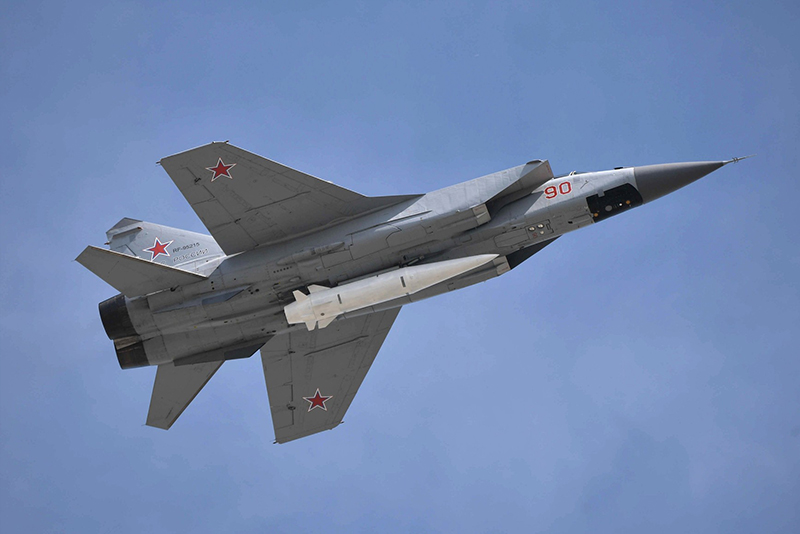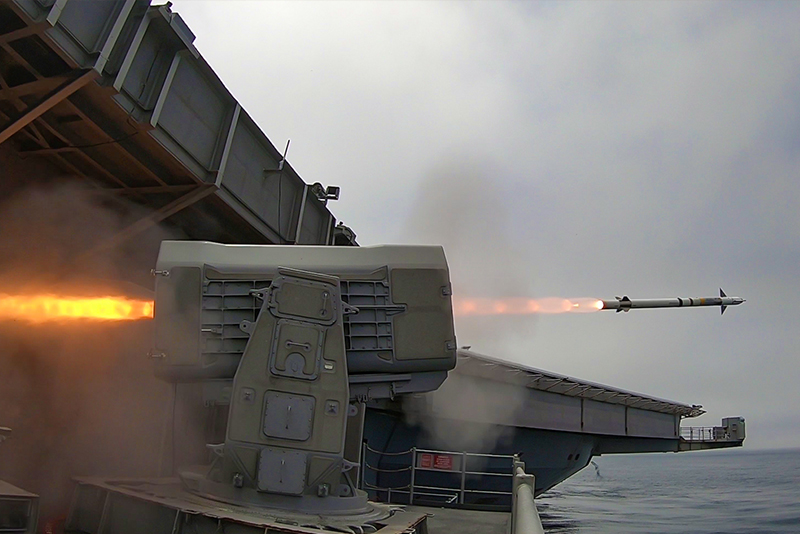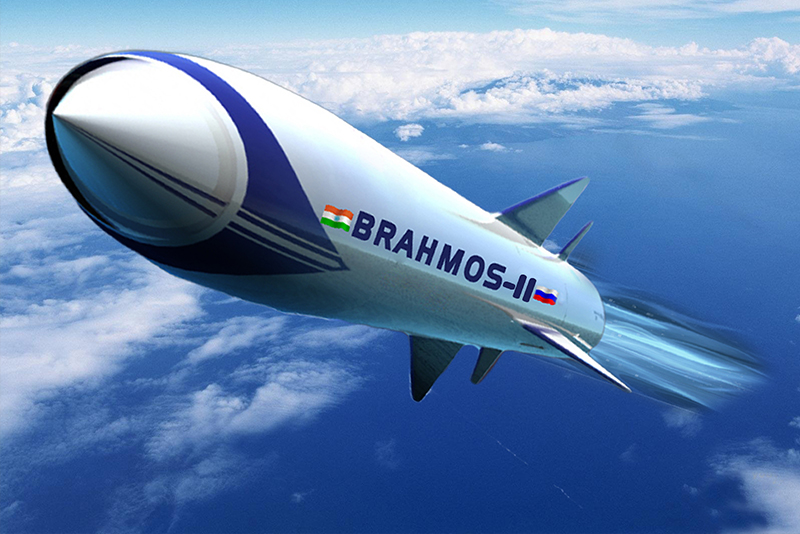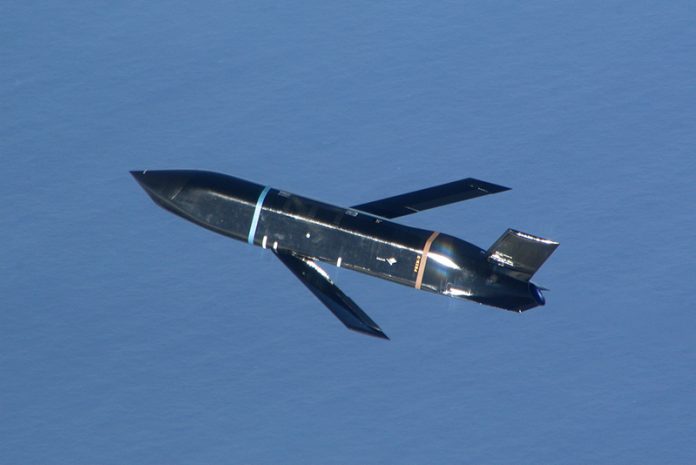The anti-ship missile has come a long way since the crude guided weapons first witnessed during the Second World War.
There are a bewildering array of weapons systems optimised for the destruction of surface vessels. At the height of the Cold War, the RAF’s Blackburn Buccaneer aircraft had an arsenal that included TV- and radar-guided Matra Martel missiles, longer-range BAE (now MBDA) Sea Eagle anti-ship missiles, Texas Instruments (now Raytheon) Paveway laser-guided bombs and tactical nuclear weapons, while during the Falklands War, the courageous and highly skilled Argentinian pilots wreaked havoc on Britain’s naval task force – largely using unguided ‘iron bombs’. The Royal Navy (RN) was saved from disaster largely because some of these weapons had not fused by the time they hit their targets. During an engagement between the US Navy and Iranian forces in 1988 (Operation Praying Mantis), US aircraft attacked enemy vessels using AGM-84 Harpoon missiles, AGM-123 Skipper rocket-propelled bombs, Walleye TV-guided bombs, and unguided 1,000lb (453kg) bombs.
But with the increasing sophistication and lethality of today’s anti-aircraft defences, anti-ship attacks are better carried out without having to overfly the target, and ideally from significantly greater stand-off range, and to do this requires the use of (ideally guided) anti-ship missiles (AShMs).
These range from small weapons intended for use against fast and agile small boats to ballistic missiles that are designed to take out a capital ship. There are systems that can be fired from other ships, or from land-based platforms, or from helicopters or fixed wing aircraft, while some missiles have variants for each of these classes of firing platform. These various anti-ship weapons employ different types of guidance, use different warhead types and sizes, and follow a wide variety of flight profiles.
During the Second World War, allied anti-shipping aircraft used cannon, unguided rockets, bombs and homing torpedoes against enemy ships, but Germany did develop the first operational anti-ship missiles, which used radio command guidance. Weapons like the Henschel Hs 293 and the unpowered, armour-piercing Fritz X gained some success, especially in the Mediterranean Theatre, from 1943–44, sinking or heavily damaging at least 38 ships including the Italian battleship Roma and the cruiser USS Savannah. The wire-guided Hs 293B and the television-guided Hs 293D variants were developed to counter allied radio jamming, but neither reached operational service.
On the Allied side, the US Navy deployed the ASM-N-2 Bat radar-guided glide bomb, which was claimed to be the world’s first autonomously-guided, radar-homing anti-ship weapon, and used it operationally against the Japanese in April 1945. The powered McDonnell LBD-1 Gargoyle saw no operational use.
During the Cold War, Western Navies were more concerned with tackling airborne and underwater threats than with engaging enemy warships, since the Russian Navy’s ‘blue water’ capabilities were relatively limited, while the anti-ship mission tended to fall to submarines, using torpedoes, and to airborne platforms – particularly fast jets – using much the same weapons as they employed against ground targets. For many years, missile technology was insufficiently advanced to allow the development of effective anti-ship missiles, though some larger aircraft (like the Soviet Tu-16 ‘Badger’ and Tu-95 ‘Bear’) did carry large cruise missiles (usually nuclear-armed) intended for use against large naval targets like US aircraft carriers.
Modern anti-ship missiles came to prominence following the sinking of the Israeli destroyer Eilat (the former HMS Zealous) by Egyptian missile boats in 1967, while air launched anti-ship missiles were used in the 1982 Falklands War. Five Exocet missiles had been delivered to Argentina before the war, and these were used to sink the British Type 42 destroyer HMS Sheffield on 4 May 1982. The official Royal Navy Board of Inquiry Report stated that evidence indicated that the warhead had not detonated – demonstrating the lethality of modern AShMs. A single Exocet which failed to explode left a destroyer dead in the water, and which sank four days later. Two Exocets were then used to sink the 15,000-ton container ship Atlantic Conveyor on 25 May.
During the long Iran–Iraq War in the 1980s, Iran and Iraq targeted one another’s merchant shipping and especially oil tankers in what became known as the Tanker War. The Iraqi Air Force used MiG-23s, Mirage F1s and Super Frelon helicopters armed with Exocet anti-ship cruise missiles during the first phase of this campaign, before France supplied Dassault Super Etendards in 1984, allowing Iraq to increase the range of its anti-shipping Exocet strikes. A Liberian tanker, Neptunia, was hit by an Iraqi Exocet in February 1985, becoming the first tanker to sink as a result of a missile strike. In 1987, a US Navy guided-missile frigate, USS Stark, was hit by an Exocet anti-ship missile fired by an Iraqi Mirage F1.
Most early air-launched anti-ship missiles were derivatives of weapons originally developed for ship-against-ship combat, including the US AGM-84 Harpoon, the Chinese YJ-83, the French AM39 Exocet, the Italian Marte, the Norwegian Penguin, Russia’s Zvezda Kh-35 and the Swedish RBS-15, although some dedicated air-launched missiles were also developed and deployed, including the Anglo-French Martel and its active radar-homing, turbojet-powered Sea Eagle derivative.
While early anti-ship missiles used radio command guidance, most modern missiles are ‘fire and forget’ and use infrared or active radar homing, often in conjunction with inertial guidance.
Sea-skimming
Most anti-ship missiles follow a flat sea skimming trajectory, often with a final highly supersonic ‘dash’ to the target, though some ballistic missiles have been re-purposed or designed for an anti-ship role, especially by China’s People’s Liberation Army Navy. Anti-ship ballistic missiles would approach their targets at enormous speed, with sufficient kinetic energy to cripple or destroy a large naval ship (including the largest aircraft carriers) with a single hit, even with a conventional warhead, as well as being very difficult to intercept.
Because a direct hit is required to be effective, they would need a precise and high-performance terminal guidance system. Such weapons can be air launched. Russia’s Kh-47M2 Kinzhal, for example, was developed to hit ballistic missile defence ships and can be carried by Tu-22M3 bombers or MiG-31K interceptors.

Whether ballistic or sea-skimming, modern anti-ship missiles are hard to evade, outrun or out-turn once a target has been acquired. To counter the threat, the modern surface ship has to avoid being detected, or has to decoy or destroy all of the incoming missiles or their missile launch platforms – ideally destroying the latter before missiles have even been fired.
An incoming missile does not have things ‘all its own way’, however, and will have to overcome multi-layered defences, perhaps beginning with patrolling carrier- or land-based fighter aircraft carrying long-range missiles. Its target will probably be equipped with integrated computer fire-control systems for agile surface-to-air missiles (SAMs) guided by powerful and agile radar systems, and may be able to simultaneously track, engage, and destroy several incoming anti-ship missiles or hostile aircraft. The missile will also have to cope with electronic countermeasures, chaff, and decoys, and an ‘inner layer’ of missile defences, using short-range missiles like the Raytheon Sea Sparrow or the Rolling Airframe Missile (RAM). Even the target ship’s own main gun armament may be used defensively, as well as dedicated close-in weapons systems (CIWS), using rapid firing guns.

The development of new air-launched anti-ship missiles slowed following the end of the Cold War, as navies increasingly operated in the littoral zone, and as the need to prepare for peer-on-peer engagements gave way to a need to engage small, manoeuvrable boats and other asymmetric threats – even including suicide bombers using jet skis. This did, however, lead to the development of a whole new class of cheap, lightweight missiles for use against this class of target. The chance of peer or near-peer engagements (increasingly entailing ship-against-ship maritime warfare) seemed to grow with increasing tensions between the USA and its allies on one side, and China and Russia on the other, and this led to some renewed emphasis on the development and procurement of bigger anti-ship missiles.
Most of the new generation of AShMs are stealthy, highly supersonic and autonomous, and many of them carry large warheads – sufficient to inflict a manoeuvre kill on even the largest targets, and able to saw smaller vessels in half. They come screaming in at sea-skimming heights, giving defences little time to react and presenting a difficult target for defensive systems.
The joint Russian-Indian PJ-10 BrahMos has a 660lb (300kg) warhead, and is claimed to be the fastest low-altitude missile in the world, while also enjoying a 500km range. Brahmos is powered by a two stage power-plant, with a solid-fuel rocket providing the first stage, accelerating the missile to supersonic speeds and with a liquid-fuelled ramjet as the second stage, accelerating it to Mach 2.8 at wavetop height. The BrahMos-II, now under development, is a hypersonic version with a speed of Mach 7-8. It is due to begin testing by 2020.

China’s CASIC YJ-12 is similar to BrahMos, with a 550lb (250kg) warhead and an integrated liquid fuel ramjet engine and a solid rocket booster conferring a cruise speed of Mach 2.5-3.5 and a range of 150-400km. In service with the PLA Navy’s Xian H-6J and H-6L ‘Badger’ bombers the YJ-12 will also be carried by the Shenyang J-16 (a derivative of the Su-30MKK) and is being offered to export customers as the CM-302.
Japan’s new ASM-3 has completed testing, and is expected to enter service imminently, initially equipping the JASDF’s Mitsubishi F-2 fighters, and perhaps later the F-35A and Kawasaki P-1. The XASM-3 is a stealthy sea-skimming missile with hypersonic performance, its solid-fuelled rocket and integrated ramjet powering it to speeds of up to Mach 5. Range is being boasted to 400km, but exact warhead weight remains classified.
Less speed; more stealth
But not all new AShMs are hypersonic or even highly supersonic. Norway’s Kongsberg Naval Strike Missile (claimed to be the world’s first 5th generation anti-ship missile) relies on stealth rather than speed, and is claimed to be ‘fully passive,’ not using active sensors to track targets and not emitting infrared or radar that could be detected by enemy ships. The missile is powered by a small turbofan (after an initial rocket boost) and has a range of 185km. It carries a 275lb (125kg) warhead. A derivative, the developmental Joint Strike Missile, is designed to be capable of both air to ground and anti-ship missions. The JSM will fit the internal weapons bay of the Lockheed Martin F-35 Joint Strike Fighter.
Another relatively slow mover is the American Long-Range Anti-Ship Missile (LRASM), intended as a successor to and replacement for the ageing AGM-84 Harpoon. LRASM is a derivative of the JASSM-ER cruise missile used by US Air Force bombers, and is stealthy and jam-resistant, producing no trackable radar return and no real IR signature. LRASM will use this low observability and its autonomous capabilities to detect and attack targets while evading their defences. LRASM has a range of more than 500 miles, compared to 67 miles for Harpoon. It can deliver a 1,000lb (453kg) penetrating warhead, hitting targets with an accuracy of within three metres.
For the US and its allies, LRASM promises to be a useful means of addressing the growing threat posed by Chinese naval forces in the Western Pacific, protecting international shipping routes and preventing China from turning the area between its coast and the island chain stretching from the Japanese archipelago to the Philippines into a no-go area for allied ships and a sanctuary for its own.
At the other end of the scale, the development and refinement of weapons like the MBDA Brimstone and Sea Venom has produced a new generation of short-range missiles for use against maritime targets, replacing lighter weight AShMs like the Aerospatiale AS 15 TT and the MBDA Sea Skua. The Sea Venom is a lightweight Anglo-French anti-ship missile (formerly known as the Future Anti-Surface Guided Weapon (Heavy)) that was designed to equip Royal Navy Wildcat helicopters and French Navy Panther and NH90 helicopters. The weapon is expected to enter service with the Royal Navy in late 2021.
by Jon Lake












